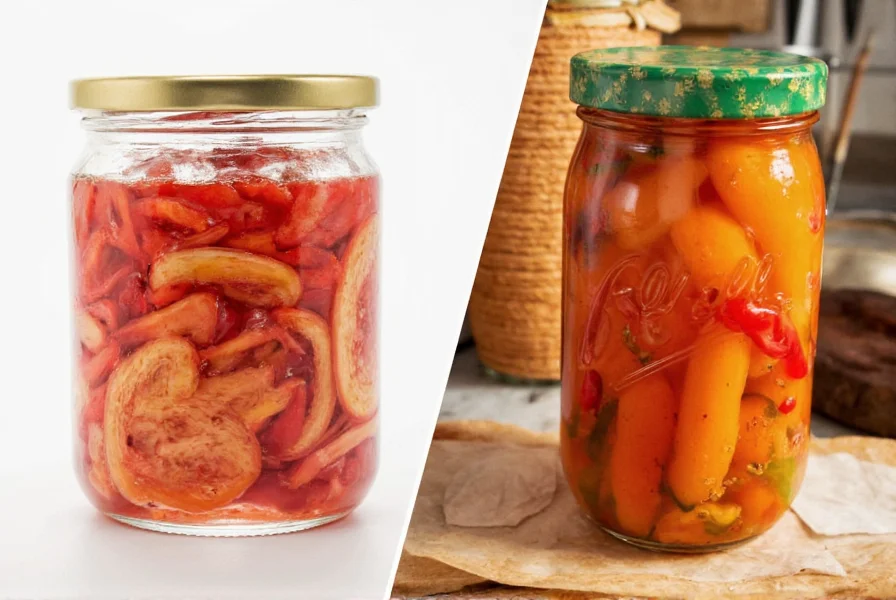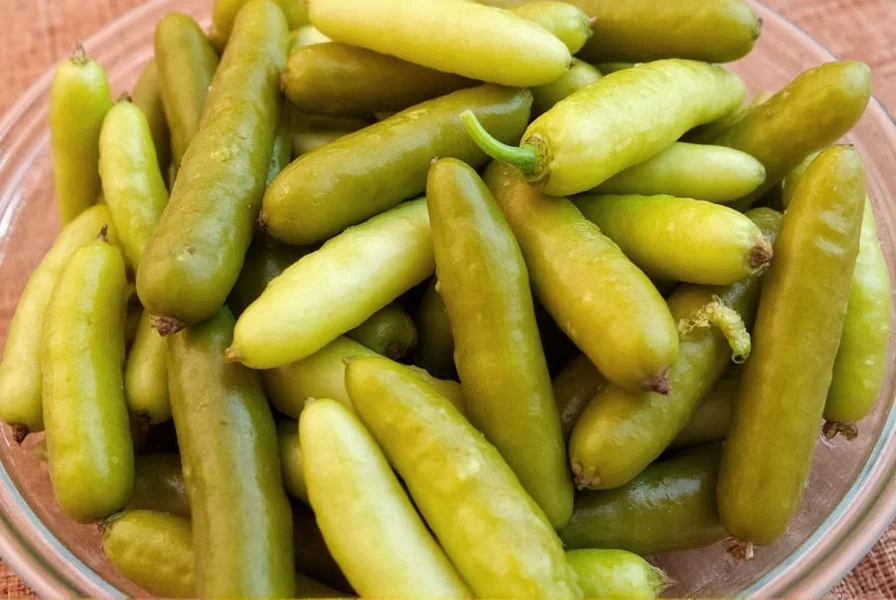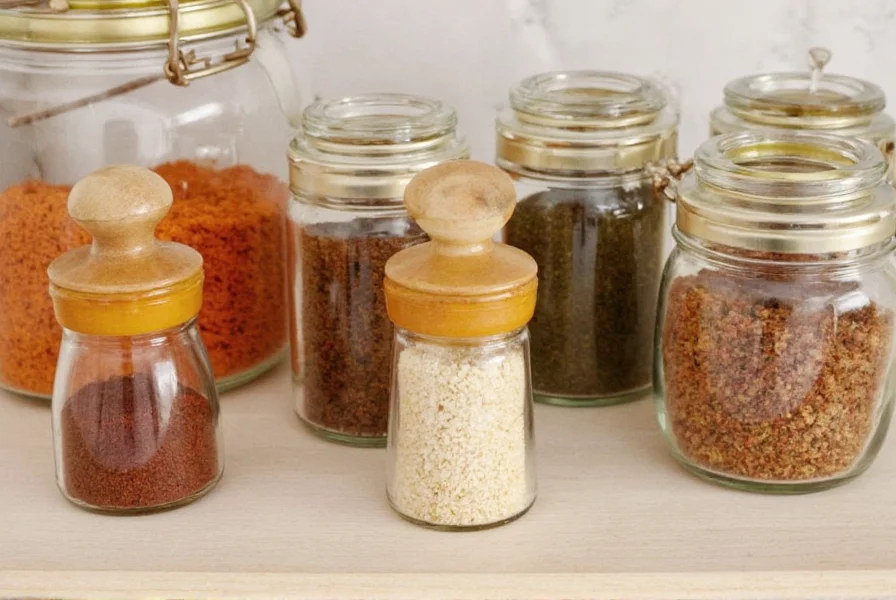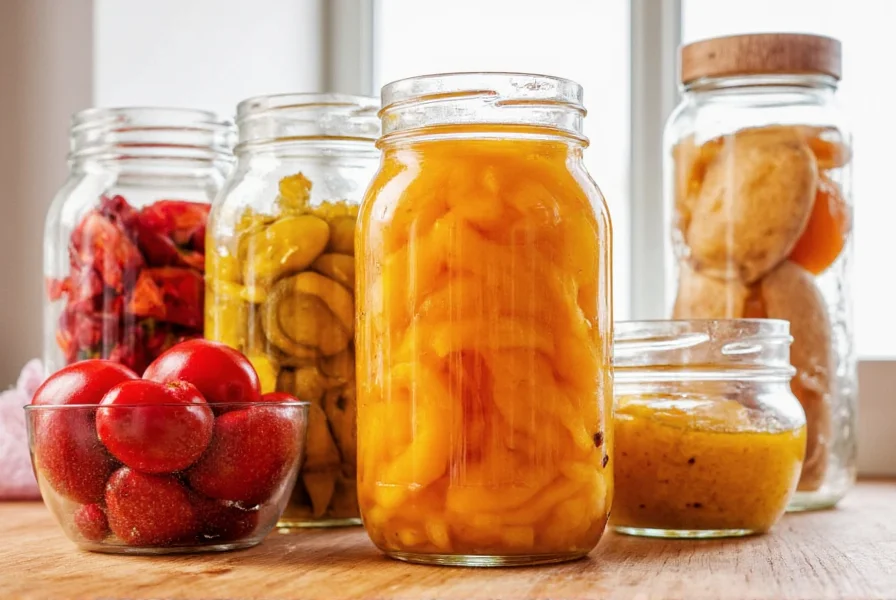Pickled and fermented foods are often confused, but they're fundamentally different preservation methods. Pickling uses vinegar or brine to preserve food, while fermentation relies on microbial activity to transform flavors and nutrients. Understanding these differences helps you make informed choices for cooking, health, and food safety.
Table of Contents
- What is Pickling?
- What is Fermentation?
- Key Differences Between Pickled and Fermented
- Practical Tips for Using Both Methods
- Frequently Asked Questions
- Conclusion
What is Pickling?
Pickling preserves food by submerging it in an acidic solution—typically vinegar, saltwater, or brine—to inhibit bacterial growth and add flavor. This method is quick and produces a tangy, crisp texture ideal for immediate consumption.

- Vinegar-based pickles: Vegetables soaked in vinegar, sugar, and spices for immediate tangy flavor (e.g., dill pickles).
- Salt-brined pickles: Use saltwater to draw out moisture; some may undergo limited fermentation but rely primarily on salt for preservation.
Important: Vinegar-based pickles do not contain live probiotics because the high acidity kills beneficial bacteria.
What is Fermentation?
Fermentation uses natural microorganisms (bacteria, yeast, or molds) to break down sugars in food, producing acids, gases, or alcohol. This ancient process preserves food while enhancing flavor, texture, and nutritional value.

- Kimchi: Korean fermented cabbage with chili peppers and garlic.
- Sauerkraut: Fermented cabbage using only salt and time.
- Kombucha: Fermented tea with a symbiotic culture of bacteria and yeast (SCOBY).
Fermented foods typically require refrigeration after opening to maintain live cultures and prevent over-fermentation.
| Aspect | Pickled | Fermented |
|---|---|---|
| Primary Process | Acidic solution (vinegar or brine) | Microbial activity breaking down sugars |
| Flavor Profile | Sharp, tangy, immediate sourness | Complex, umami, evolving flavors |
| Texture | Crisp and firm | Softer, sometimes effervescent |
| Preservation Duration | Short-term (weeks to months) | Long-term (months to years) |
| Health Benefits | Minimal probiotics; retains original nutrients | Rich in probiotics, enzymes, and bioavailable nutrients |
| Common Examples | Vinegar pickles, canned relishes | Kimchi, yogurt, miso, sourdough |
Practical Tips for Using Both Methods
- For pickled foods: Use vinegar-based pickles as condiments for sandwiches, burgers, or salads. Store opened jars in the refrigerator to maintain crispness.
- For fermented foods: Pair kimchi or sauerkraut with rich dishes like grilled meats or stews to balance flavors. Always check for signs of spoilage (mold, off-odors) before consuming.
- Home fermentation: Use non-iodized salt and clean glass jars. Maintain a 2-3% salt-to-water ratio for safe fermentation. Avoid metal containers that can react with acids.
- Health considerations: Fermented foods support gut health due to probiotics, while vinegar pickles provide low-calorie flavor without live cultures. Consult a healthcare provider for specific dietary needs.
Frequently Asked Questions
Can something be both pickled and fermented?
Yes. Traditional sauerkraut and kimchi are both pickled (using salt brine) and fermented (via microbial activity). However, vinegar-based pickles like store-bought dill pickles are not fermented—they rely solely on acid for preservation.
Do pickled foods contain probiotics?
Vinegar-based pickles do not contain live probiotics because the acidic environment kills beneficial bacteria. Only salt-brined fermented pickles (like homemade sauerkraut) retain live cultures.
Which lasts longer—pickled or fermented foods?
Fermented foods typically have longer shelf life when properly stored. Vinegar pickles last 3-6 months refrigerated, while well-fermented foods like kimchi or sauerkraut can last 6-12 months due to natural preservation from acid production.
Is one healthier than the other?
Fermented foods generally offer more health benefits due to probiotics that support digestion and immunity. Pickled foods preserve nutrients but lack live cultures. Both methods retain vitamins and minerals from the original food.
How can I tell if something is pickled or fermented when shopping?
Check the ingredients: Vinegar-based pickles list vinegar as the first ingredient. Fermented products list only salt, water, and vegetables (no vinegar). Look for "live cultures" or "unpasteurized" on labels, and always refrigerate fermented items.
Can I safely make fermented foods at home?
Yes, with proper technique. Use clean equipment, non-iodized salt, and maintain submersion in brine. Start with simple recipes like fermented carrots or cabbage. Avoid iodized salt or metal containers, which can disrupt fermentation.
Conclusion
Pickling and fermentation are distinct preservation techniques with unique processes and outcomes. Pickling uses acid for quick preservation and tangy flavor, while fermentation relies on microbes for complex flavors and gut-health benefits. Understanding these differences ensures you select the right method for your culinary and health goals.












 浙公网安备
33010002000092号
浙公网安备
33010002000092号 浙B2-20120091-4
浙B2-20120091-4